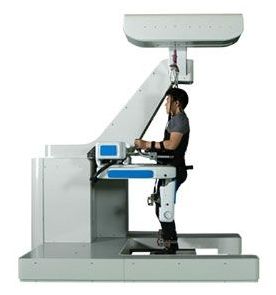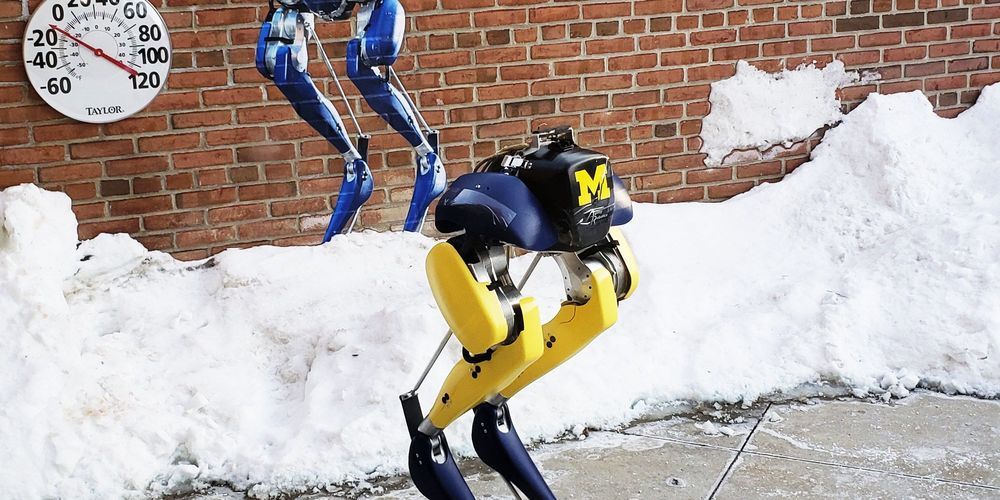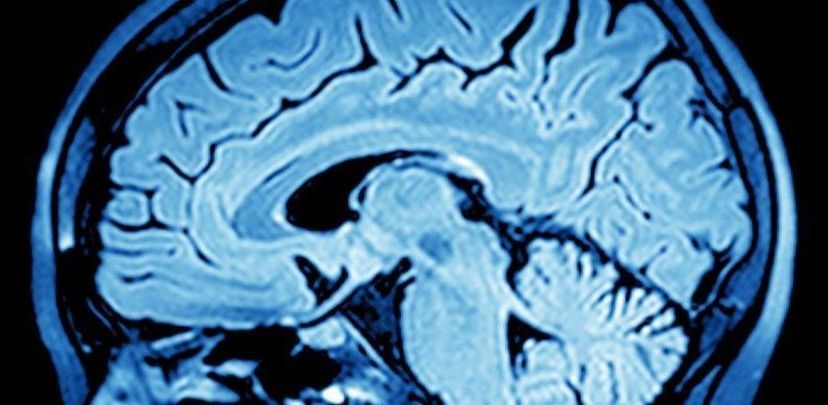Archive for the ‘robotics/AI’ category: Page 1944
Feb 1, 2019
IRobot Finally Announces Awesome New Terra Robotic Lawnmower
Posted by James Christian Smith in category: robotics/AI

Since the first Roomba came out in 2002, it has seemed inevitable that one day iRobot would develop a robotic lawn mower. After all, a robot mower is basically just a Roomba that works outside, right? Of course, it’s not nearly that simple, as iRobot has spent the last decade or so discovering, but they’ve finally managed to pull it off.
More than 10 years in the making, Terra wants to do for your lawn what Roomba has done for your floors.
Continue reading “IRobot Finally Announces Awesome New Terra Robotic Lawnmower” »
Feb 1, 2019
Healbot-T Rehabilitation Robot
Posted by James Christian Smith in categories: biotech/medical, robotics/AI
Feb 1, 2019
Meet the Bots That Review and Write Snippets of Facebook’s Code
Posted by James Christian Smith in categories: cybercrime/malcode, employment, engineering, robotics/AI

To make its developers’ jobs more rewarding, Facebook is now using two automated tools called Sapienz and SapFix to find and repair low-level bugs in its mobile apps. Sapienz runs the apps through many tests to figure out which actions will cause it to crash. Then, SapFix recommends a fix to developers, who review it and decide whether to accept the fix, come up with their own, or ignore the problem.
Engineers began using Sapienz to review the Facebook app in September 2017, and have gradually begun using it for the rest of the company’s apps (which include Messenger, Instagram, Facebook Lite, and Workplace). In May, the team will describe its more recent adoption of SapFix at the International Conference on Software Engineering in Montreal, Canada (and they’re hiring).
Continue reading “Meet the Bots That Review and Write Snippets of Facebook’s Code” »
Feb 1, 2019
The Hidden Automation Agenda of the Davos Elite
Posted by Derick Lee in category: robotics/AI
But in private settings, including meetings with the leaders of the many consulting and technology firms whose pop-up storefronts line the Davos Promenade, these executives tell a different story: They are racing to automate their own work forces to stay ahead of the competition, with little regard for the impact on workers.
DAVOS, Switzerland — They’ll never admit it in public, but many of your bosses want machines to replace you as soon as possible.
I know this because, for the past week, I’ve been mingling with corporate executives at the World Economic Forum’s annual meeting in Davos. And I’ve noticed that their answers to questions about automation depend very much on who is listening.
Continue reading “The Hidden Automation Agenda of the Davos Elite” »
Jan 31, 2019
Atari master: New AI smashes Google DeepMind in video game challenge
Posted by Quinn Sena in categories: entertainment, information science, robotics/AI
A new breed of algorithms has mastered Atari video games 10 times faster than state-of-the-art AI, with a breakthrough approach to problem solving.
Designing AI that can negotiate planning problems, especially those where rewards are not immediately obvious, is one of the most important research challenges in advancing the field.
A famous 2015 study showed Google DeepMind AI learnt to play Atari video games like Video Pinball to human level, but notoriously failed to learn a path to the first key in 1980s video game Montezuma’s Revenge due to the game’s complexity.
Continue reading “Atari master: New AI smashes Google DeepMind in video game challenge” »
Jan 31, 2019
A Smart Stethoscope Puts AI in Medics’ Ears
Posted by Paul Battista in category: robotics/AI
Jan 31, 2019
The Punishing Polar Vortex Is Ideal for Cassie the Robot
Posted by Genevieve Klien in categories: biotech/medical, robotics/AI, transportation
This is not a story about how the polar vortex is bad—bad for the human body, bad for public transportation, bad for virtually everything in its path. This is a story about how one being among us is actually taking advantage of the historic cold snap: Cassie the bipedal robot. While humans suffer through the chill, this trunkless pair of ostrich-like legs is braving the frozen grounds of the University of Michigan, for the good of science.
“When we saw the announcement for the polar vortex, we started making plans to see how long we could operate in that kind of weather,” says roboticist Jessy Grizzle. “We were going to tie a scarf on her just so it looked cute, but we decided people would think that was keeping her warm and affecting the experiment, so we didn’t.”
You’ve read your last complimentary article this month. To read the full article, SUBSCRIBE NOW. If you’re already a subscriber, please sign in and and verify your subscription.
Continue reading “The Punishing Polar Vortex Is Ideal for Cassie the Robot” »
Jan 31, 2019
Scientists Have Found a Way to Convert Human Brain Signals Directly Into Speech
Posted by Shane Hinshaw in categories: information science, robotics/AI
Welcome to the future.
In the first experiment of its kind, scientists have been able to translate brain signals directly into intelligible speech. It may sound like wild science fiction at first, but this feat could actually help some people with speech issues.
And yes, we could also get some futuristic computer interfaces out of this.
Continue reading “Scientists Have Found a Way to Convert Human Brain Signals Directly Into Speech” »
Jan 30, 2019
Microsoft, Google Use Artificial Intelligence to Fight Hackers
Posted by Quinn Sena in categories: information science, robotics/AI, security
Last year, Microsoft Corp.’s Azure security team detected suspicious activity in the cloud computing usage of a large retailer: One of the company’s administrators, who usually logs on from New York, was trying to gain entry from Romania. And no, the admin wasn’t on vacation. A hacker had broken in.
Microsoft quickly alerted its customer, and the attack was foiled before the intruder got too far.
Chalk one up to a new generation of artificially intelligent software that adapts to hackers’ constantly evolving tactics. Microsoft, Alphabet Inc.’s Google, Amazon.com Inc. and various startups are moving away from solely using older “rules-based” technology designed to respond to specific kinds of intrusion and deploying machine-learning algorithms that crunch massive amounts of data on logins, behavior and previous attacks to ferret out and stop hackers.
Continue reading “Microsoft, Google Use Artificial Intelligence to Fight Hackers” »
















